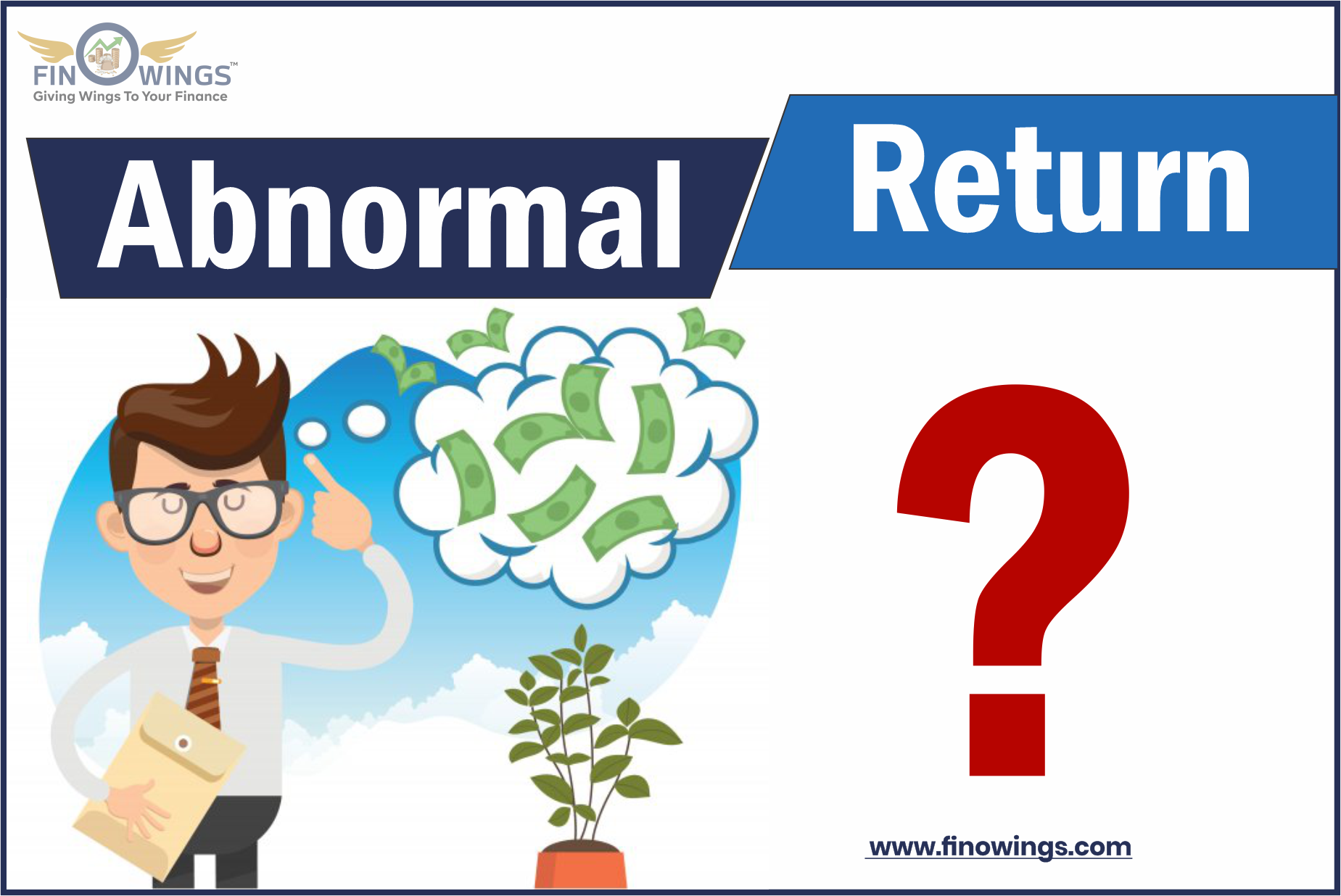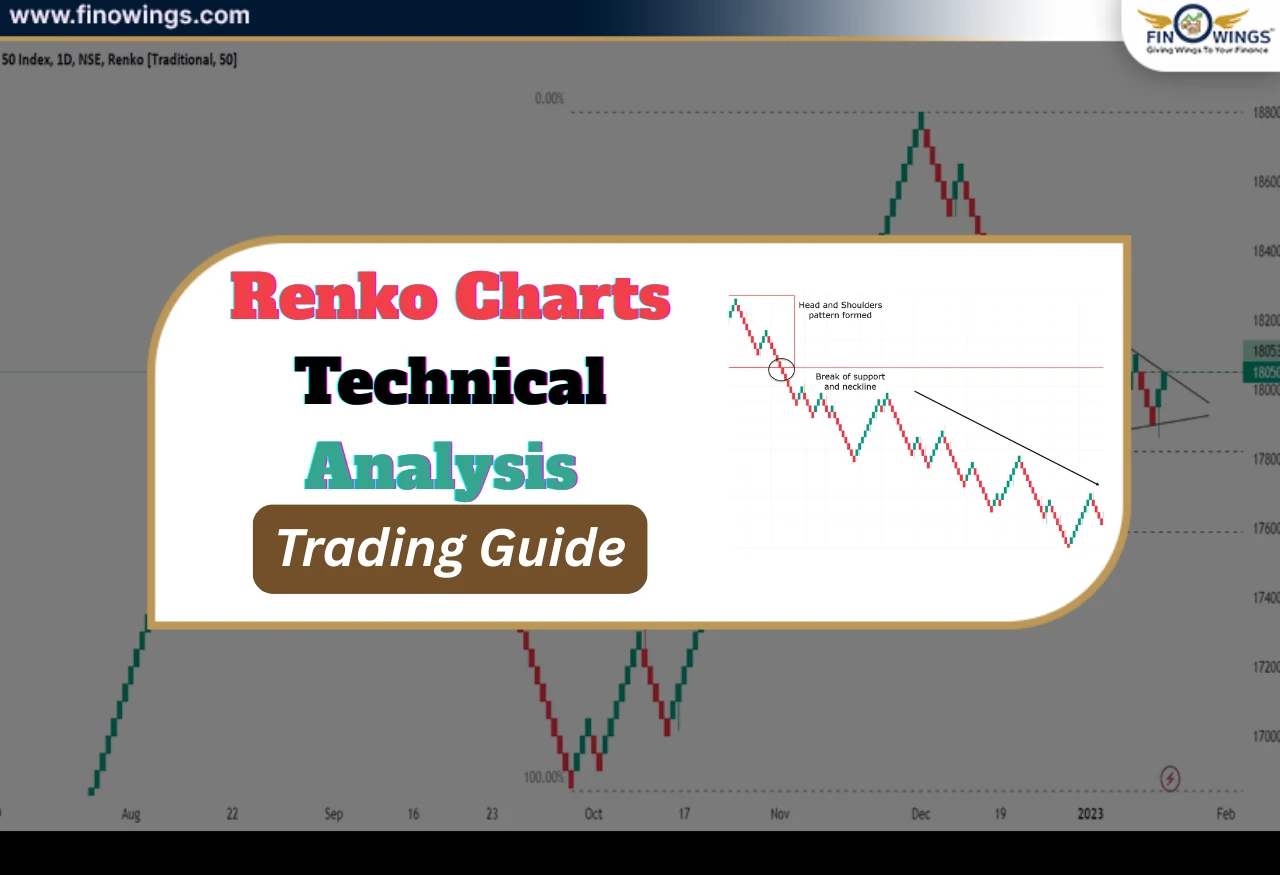Home >> Blog >> Abnormal return?
Abnormal return?

Table of Contents
1. What is Abnormal Return?
The term "abnormal return," also referred to as "extra return," describes unexpected gains (or losses) made by an investment or company. The distinction between the actual returns investors receive on an asset and the anticipated returns, which are typically projected employing the CAPM formula, is the estimate of abnormal returns.
Positive or negative abnormal returns are also possible. Whenever actual returns exceed projected returns, positive anomalous returns are achieved. Following the CAPM formula, negative anomalous returns (or losses) happen when the actual return is less than what was predicted.
2. Explanation of Abnormal Return
The investment society has developed metrics like an abnormal return to describe how much of such effects can be related to the abilities of the portfolio supervisor and his strategy of asset and investment strategies. When determining whether safety or a team of securities has outperformed or performed poorly its peers, we require to determine on what parameters we can evaluate of that kind achievement.
We employ a proportionate stock index as a reference above which we compute the extra whenever comparing the efficiency of a portfolio. For instance, the Nifty Bank Index can be used to evaluate a portfolio of Indian banking sector companies, while the S&P 500 can be used to analyze a portfolio of US large-cap stocks.
3. Example of Abnormal Returns
The anomalous return on an investor's portfolio of securities throughout the previous year is something they want to figure out. Suppose that the reference index is predicted to earn 15% while the uncertainty rate of return is 2%.
Comparing the investor's portfolio to the reference index, it had a beta of 1.25 and a return of 25%. The portfolio must have generated 18.25%, or (2% + 1.25 x (15% - 2%)), given the level of the chance taken. The abnormal return for the preceding year was therefore 6.75%, or 25 Minus 18.25%.
For a stock holding, similar computations can be useful. As an illustration, the stock ABC returned 9% and, while compared to its benchmark index, had a beta of 2. Suppose that the benchmark index is predicted to return 12% but the uncertainty rate of return is 5%. The projected return for the stock ABC is 19% according to the CAPM. As a result, the stock ABC performed poorly in the market over this time frame and experienced an anomalous return of -10%.
4. Cumulative Abnormal Return (CAR)
The aggregate of all irregular returns is termed the cumulative abnormal return (CAR). The computation of the cumulative abnormal return often takes place over a little period, frequently just a few days. This brief period was chosen because data suggests that compounding everyday anomalous returns can skew outcomes.
Cumulative abnormal return (CAR) is a valuable tool for evaluating how well asset pricing models forecast future success and is employed to quantify the impact of disputes, buyouts, and other occurrences on shared values.
A methodology called the capital asset pricing model (CAPM) is used to determine a safety's or a portfolio's projected return depending on the projected market return, beta, and the uncertainty rate of return. The estimation for the anomalous return is produced by deducting the predicted return from the actual return after calculating the predicted return for security or portfolio.
5. Importance of Abnormal Return
-
Attribution to Achievement Metric. The portfolio manager's stock choice has a significant impact on it. As a result, this metric is essential for comparing her productivity to the right benchmark and evaluating both her level of ability and achievement pay.
-
A verification of damaging divergence. As was already established, if the actual return is less than the predicted return, an abnormal return can be negative. As a result, if this occurs several times, it serves as a warning to reduce the deviation from the benchmark index since it highlights poor stock selection.
-
Comprehensive quantitative analysis. It is a common measure in the investment community because it is easily estimated, but it is difficult to come up with accurate projections of the inputs of the CAPM concept because it requires using regression techniques to analyze beta and meticulously observing previous market index return numbers. If implemented right, these forecasts move through a sieve of meticulous quantitative research and thus are more probable to generate numbers with accuracy.
-
Analysis of time series. Utilizing a metric known as the CAR, or cumulative abnormal return makes it easier to assess how company actions like dividend payments or stock splits affect share values and returns. Additionally, it aids in the analysis of the consequences of outside factors, including situations in which some business responsibilities depend, like litigation or the outcome of a legal dispute.
The CAR is derived by adding the abnormal returns over a given timeframe.
6. What Causes Abnormal Returns?
When returns are anomalous, you can compare a portfolio's uncertainty success to benchmark indices and industry norms. As a result, you can determine whether the chance you are taking is properly offset by your assets. By deducting actual returns from predicted returns, an anomalous return is produced, which can either be positive or negative. If a mutual fund achieves a 26% return despite expecting an average return of 12% per year, this suggests a 14% abnormal return. On the other hand, you would receive a negative 9% anomalous return if it truly provided a 3% return.
The predicted return rate for a particular portfolio or asset is calculated using the Capital Asset Pricing Model (CAPM), which also takes beta into account. By deducting the projected yield from the actual return rate after determining the predicted income, you can calculate an abnormal return. The success of the security or portfolio will determine any abnormal returns. Think about a benchmark return of 15% and a risk-free return of 2%, for example. If you're curious about your portfolio's anomalous income during the past year, you should understand that it has a 1.25 beta and a 25% return when compared to the benchmark index. Since your portfolio would provide an 18.25% return while accounting for risk, your abnormal return rate from the previous year was 6.75%. The stocks go through the same process.
Conclusion
In conclusion, we can state that abnormal return represents the most crucial metric that can be used to assess the effectiveness of portfolio management and the accuracy of market-movement predictions. This also provides asset-managing organizations with a rationale on which to build the portfolio management' performance-based commissions or rewards and an explanation of the same for the clients' comprehension.
Additionally, because it can be either positive or negative, it can show whenever the divergence from the stock index is ineffective and has to be reduced for the portfolio's best outcome.
Author
Frequently Asked Questions
The calculation of abnormal returns involves subtracting from the actual returns of the shares the returns that would have been obtained if the examined event hadn't occurred (normal returns). Whereas the actual returns can be empirically verified, it is necessary to calculate the normal returns.
Abnormal returns in share market trading are variances between the success of a particular stock or portfolio and future value over a specific time frame. The predicted return is typically calculated using a wide index, such as the S&P 500, or a national index, like the Nikkei 225.
According to the efficient market hypothesis (EMH), all shares are fairly valued, and looking for undervalued securities will not result in anomalous returns. Therefore, it is impossible to forecast future share values because they exhibit a random walk structure.
















